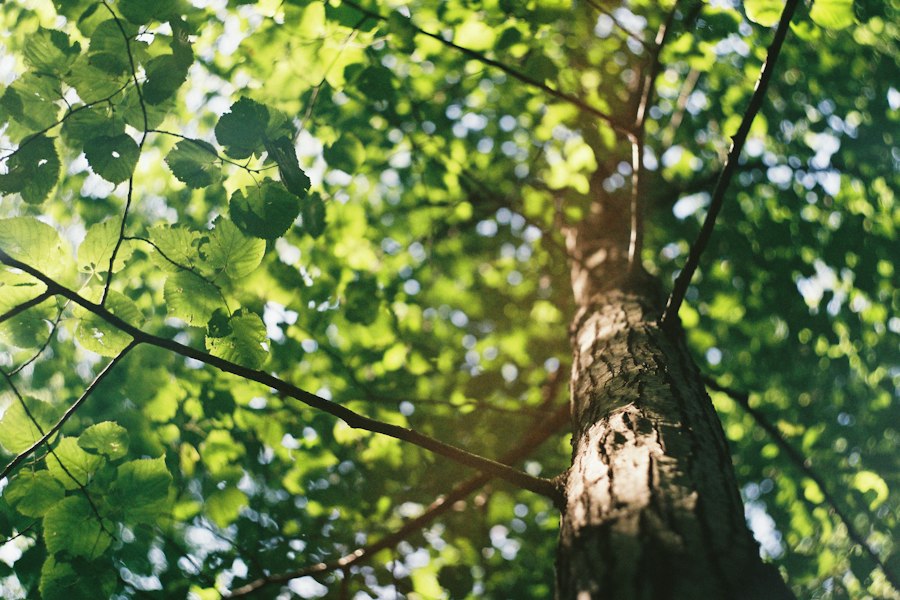Maple Magic: A Step-by-Step Guide to Growing Your Own Maple Tree from Seed

Maple trees are known for their stunning beauty, especially during the fall season when their leaves turn vibrant shades of red, orange, and yellow. These trees are a sight to behold and can instantly transform any landscape into a picturesque scene. In addition to their aesthetic appeal, maple trees also offer numerous benefits. One of the most well-known benefits is their ability to produce maple syrup, a delicious and natural sweetener that is loved by many. Whether you are looking to enhance the beauty of your surroundings or enjoy the sweet rewards of maple syrup production, planting a maple tree is a wonderful choice.
Key Takeaways
- Maple trees offer both aesthetic and practical benefits
- Successful collection of maple seeds requires proper timing and technique
- Cleaning, soaking, and stratifying seeds is crucial for successful planting
- Choosing the right location and providing proper care is essential for optimal growth
- Harvesting maple syrup is a rewarding and delicious process
Gathering Maple Seeds: Tips and Techniques for Successful Collection
The best time to collect maple seeds is in the late spring or early summer when they have fully matured. Mature maple seeds are typically brown in color and have wings attached to them. These wings help the seeds disperse in the wind, allowing them to travel and find suitable places to grow. To gather maple seeds, you can simply wait for them to fall from the tree naturally or gently shake the branches to encourage them to drop. It is helpful to spread a tarp or sheet underneath the tree to catch the falling seeds and make collection easier.
Preparing Your Maple Seeds for Planting: Cleaning, Soaking, and Stratifying
Before planting your maple seeds, it is important to clean them thoroughly. This can be done by removing any debris or excess wings that may be attached to the seeds. Once cleaned, you can soak the seeds in water for 24 hours. This soaking process helps to soften the seed coat and improve germination rates.
After soaking, you will need to stratify the maple seeds. Stratification is a process that mimics the natural conditions that seeds experience during winter dormancy. To stratify your maple seeds, place them in a plastic bag with some moist peat moss or vermiculite. Seal the bag and store it in the refrigerator for a period of 60-90 days. This cold stratification period is necessary to break the seed’s dormancy and promote germination.
Choosing the Right Location: Factors to Consider for Optimal Maple Growth
| Factors to Consider | Description |
|---|---|
| Climate | Maple trees thrive in areas with cool to moderate temperatures and consistent rainfall. |
| Soil | Maple trees prefer well-drained soil that is rich in organic matter and slightly acidic. |
| Sunlight | Maple trees require full sun to partial shade for optimal growth and development. |
| Wind | Maple trees are susceptible to wind damage, so it is important to choose a location that is sheltered from strong winds. |
| Proximity to Other Trees | Maple trees should be planted at least 20 feet away from other trees to avoid competition for resources. |
| Accessibility | Choose a location that is easily accessible for maintenance and harvesting of maple syrup. |
Maple trees thrive in a variety of soil types, but they prefer well-drained soil that is rich in organic matter. It is important to choose a location that provides adequate sunlight for your maple tree. Most maple species prefer full sun or partial shade, so make sure to select a spot that receives at least 6 hours of direct sunlight per day. Additionally, maple trees require regular watering, so it is important to choose a location that is easily accessible to a water source.
Planting Your Maple Seeds: Step-by-Step Instructions for Success
To plant your maple seeds, start by preparing the soil. Remove any weeds or grass from the planting area and loosen the soil with a garden fork or tiller. Dig a hole that is approximately twice the size of the seed and place the seed in the hole with the wing pointing upwards. Cover the seed with soil and gently firm it down.
After planting, water the area thoroughly to ensure that the soil is evenly moist. It is important to keep the soil consistently moist but not waterlogged during the germination process. You can cover the planting area with a layer of mulch to help retain moisture and suppress weed growth.
Caring for Your Maple Tree: Watering, Fertilizing, and Pruning Tips

Watering is crucial for the healthy growth of your maple tree, especially during its first few years. Young maple trees should be watered deeply once a week, providing enough water to saturate the root zone. As the tree matures, you can reduce the frequency of watering but increase the amount of water applied each time.
Fertilizing your maple tree can help promote healthy growth and vibrant foliage. Use a balanced, slow-release fertilizer in early spring or late fall. Follow the instructions on the fertilizer package for the correct application rate.
Pruning is another important aspect of maple tree care. Regular pruning helps to maintain the shape and structure of the tree, as well as remove any dead or diseased branches. Prune your maple tree during its dormant season, which is typically in late winter or early spring before new growth begins.
Common Maple Tree Pests and Diseases: Prevention and Treatment Strategies
Maple trees are susceptible to a variety of pests and diseases. Some common pests that can affect maple trees include aphids, scale insects, and caterpillars. These pests can cause damage to the leaves and overall health of the tree. To prevent infestations, regularly inspect your maple tree for signs of pests and take appropriate measures to control them if necessary.
Diseases that commonly affect maple trees include powdery mildew, tar spot, and verticillium wilt. These diseases can cause leaf discoloration, defoliation, and overall decline in the health of the tree. Proper cultural practices such as regular watering, proper pruning, and maintaining good air circulation can help prevent these diseases. If your maple tree does become infected, consult with a professional arborist for appropriate treatment options.
Monitoring Maple Growth: Tracking Progress and Troubleshooting Issues
Monitoring the growth of your maple tree is important to ensure its health and vitality. Keep an eye on the overall appearance of the tree, including the color and condition of the leaves. If you notice any changes or abnormalities, it may be a sign of an underlying issue that needs to be addressed.
Common issues that may arise include nutrient deficiencies, root rot, or pest infestations. If you suspect any problems with your maple tree, consult with a professional arborist for a proper diagnosis and treatment plan.
Harvesting Maple Syrup: How to Tap Your Maple Tree and Make Delicious Syrup
One of the most rewarding aspects of growing a maple tree is the ability to harvest your own maple syrup. To tap your maple tree, you will need a few basic tools including a drill, spiles, and collection buckets. Start by drilling a hole into the trunk of the tree at a slight upward angle. Insert the spile into the hole and attach the collection bucket to collect the sap.
Collect the sap daily and store it in a cool place until you are ready to make maple syrup. To make maple syrup, you will need to boil the sap to remove the excess water content. This can be done on a stovetop or with an outdoor evaporator. As the sap boils, it will gradually thicken and transform into maple syrup. Once it reaches the desired consistency, strain it to remove any impurities and store it in sterilized jars.
The Rewards of Growing Your Own Maple Tree and the Joy of Sharing Its Beauty with Others
Growing your own maple tree is a rewarding experience that offers both beauty and practical benefits. The vibrant fall foliage of maple trees adds a touch of magic to any landscape, while the production of maple syrup allows you to enjoy a delicious natural sweetener straight from your own backyard.
By following the tips and techniques outlined in this article, you can successfully plant and care for your maple tree, ensuring its health and longevity. Remember to monitor its growth, address any issues that arise promptly, and share its beauty with others.
Planting a maple tree is not only an investment in your own enjoyment but also a gift to future generations who will have the opportunity to appreciate its beauty and reap its rewards. So go ahead, plant a maple tree today and watch as it grows into a majestic symbol of nature’s beauty.



